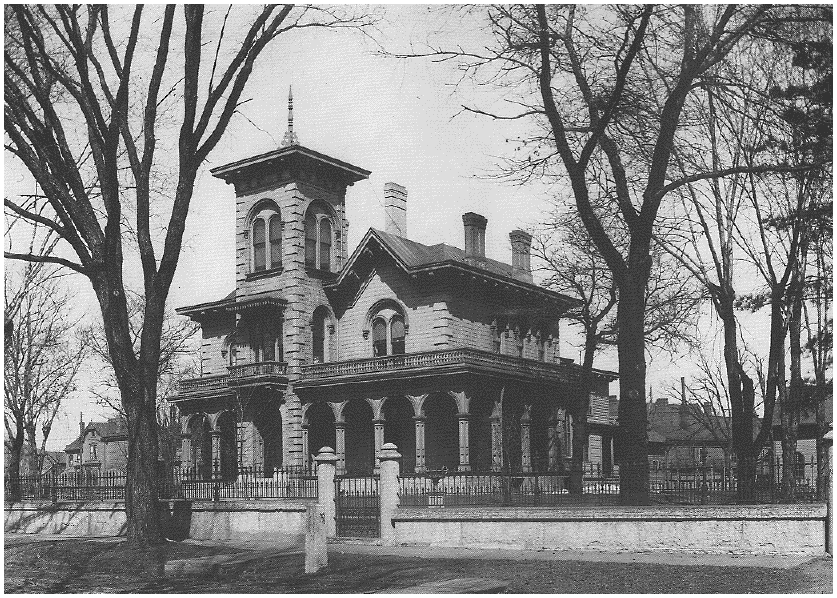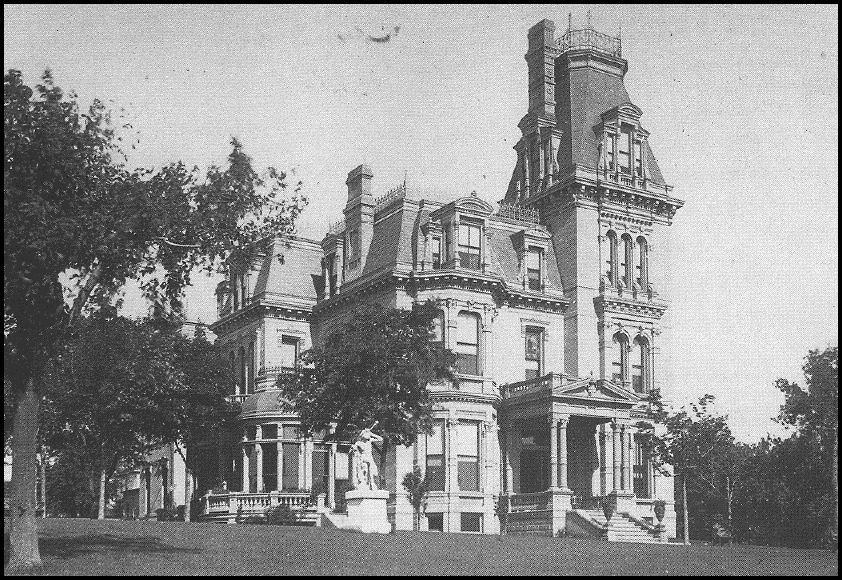
St Paul's
Architecture
A History
Jeffrey A. Hess
Paul Clifford Larson
(Minnesota)

All we know of St. Paul is that there was a glorious radio program on Minnesota Public Radio called "St. Paul Sunday Morning" that used to come on at KUSC our local public radio station but then KUSC confusing Classical Music with Classical Muzak figured there would be more bucks in repeating the Brahms symphonies and the "1812 Overture" and the dozens of vapid Strauss waltzes and "Eine Kleine Nachtmusik" at least twice a week so they could appeal to those who essentially loathe music from other centuries and other cultures thus they have been able to enrich themselves as a neo-commercial "classical" station that tells you in promos every fifteen minutes or so how lucky we are to have them filling up the airspace with such an old and chunky overcooked beef pot-pie.About two years ago they dumped our beloved "St. Paul Sunday Morning" but we fooled them: soon after with our local Computer Genius we found the British Broadcasting Corporation. Their long-famous, gracious, and honorable Radio Three is now on the internet at
www.bbc.co.uk/radio/aod/
mainframe.shtml?http://www.bbc.co.uk/
radio/aod/radio3.shtmlIt is grand and respectful; so respectful of the listeners that, unlike KUSC, they need not repeat ad nauseam how great they are. And they prove it with uninterrupted programs like "Composer of the Week" and "Morning Concert" and "Music through the Night."So we are now in musical bliss heaven but we still miss the whimsy of Bill McGlaughlin and his pure and unfettered "St. Paul Sunday Morning" which for years engorged our musical soul.
§ § § Anyway, that's all we knew about St. Paul but now we would give what's left of our soul to drop in on McGlaughlin in person and then spend a day or so tooling around the city to goggle the Neoclassical, Federal, American Colonial, Greek Revival, Prairie School, Cotswold Cottage, and Georgian dwellings pictured in St Paul's Architecture.
It is stated that the 225 buildings shown here are still standing, that the "focus of the book throughout is on buildings that have survived," but along with their excellent commentary, the authors give us some tears, pictures "representatives of a type," buildings that no longer survive. There is for example a fallen mansion [See Fig. 2 below] --- the Norman W. Kittson house --- awash with French Renaissance "sculpted entries, densely ornamented window hoods, and mansard roof well stocked with dormers and chimneys." It was POOF demolished twenty years after its first delightful, delighted, and delighting appearance.
On viewing the last pages of this volume, those of us who appreciate the screwiness of loverly 18th and 19th and early 20th century American architecture will possibly fall to the ground and foam at the mouth, for after WWII various abortions appeared and I'm not talking Planned Parenthood. St Paul Insurance Companies for example with their PIFFLE massive glass circle-jerk office tower and POOH a glass idiot behemoth box designed not to delight but to frighten and appall. If you ask me this so-called "International Style" is a throw-back to the architecture invented by the Normans to terrorize the peasants and drive off the barbarians.
Despite these forces of evil that now abound in American architectural circles, Messers Hess and Larson deserve our sincere thanks for putting together a book that is sure to make readers fall in love with the old American Baroque, and at the same time, learn to disdain the modernists with their throw-back if not throw-up fortress school of architecture.

--- Patricia West, AIA